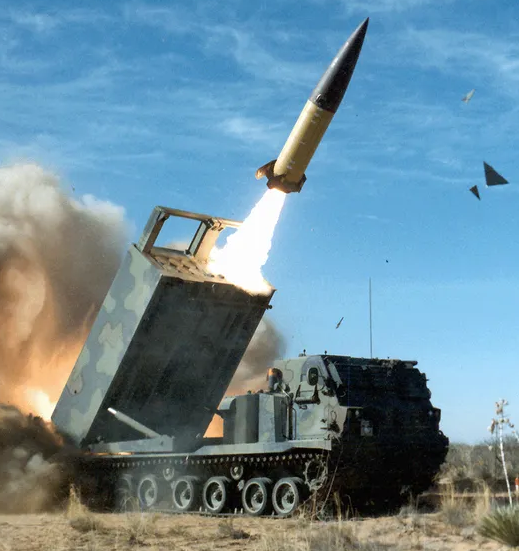Almost everything that gets onto a commercial plane — fuel, checked-in baggage, cargo and meals — is weighed. For passengers and their cabin bags, most airlines use average data.
But Finland’s national carrier Finnair said Friday that it started asking passengers this week voluntarily and anonymously hop onto a scale with their hand luggage at the country’s main airport in Helsinki, the airline said Friday. The aim is to get their own figures.
“We will need data for both winter season and for summer season — in winter season people typically have heavier clothing, which impacts weights,” Finnair spokeswoman Päivyt Tallqvist told The Associated Press, adding that the survey would last until May.
Passengers boarding onto European and long-haul flights won’t be “penalized for their weight,” and “the numbers are kept discreet, away from prying eyes,” she added.
If i get extra free luggage for not be a fat fuck then im happy.
I imagine that there will be a lot of FUD about this given the general lack of knowledge about how airplanes actually work and what center of gravity is all about.
Weight and weight balance is a big deal for aircraft stability. For example, a bunch of weight in the back of the plane will cause it try to pitch up more, which can matter quite a bit when landing.
deleted by creator
I think it can be compensated for to some small degree. But… A deeper explanation is needed.
A plane has a center of mass (or gravity) which is the gravity balance point of the plane. It also has a center of lift which is like the center of gravity but for the lift force of the wing. See pic:

If the center of lift and center of gravity aren’t in the same horizontal location along the length of the plane, the plane has a net force that rotates the nose up or down.
It’s like if you had a yard stick and balanced it on your finger. And then added a weight somewhere between your finger and one end. The yard stick will start to rotate (tilt).
The horizontal stabilizer applies a force as well, and it is trimmed to balance the other forces and set the angle of attack (pitch) of the plane. The elevator allows momentary adjustment of pitch.
I may not describe this perfectly but… When a plane has too much weight towards the rear, it will be unstable (and dangerous) to fly. When a plane has too much weight towards the nose it will be somewhat sluggish but stable.
Balancing nose heavy is preferable to tail heavy in general due to the stability issue. A little bit of tail heavy is a bit dangerous and a bit of nose heavy is no big deal. I think another factor is that the tendency of a plane to pitch up could result in aerodynamic stall (loss or lift). Of course, if a plane is too nose-heavy, you can’t climb.
Front to back balance is really important to how the plane handles. Side to side balance matters but in terms of passengers / cargo, they’re more narrowly distributed about the center of the plane compared to their distribution front to back.
deleted by creator
Other problem is that a weight shift has to be countered with elevator trim, which can increase aerodynamic drag and therefore fuel consumption.
I’d be uncomfortable if large aircraft were operating so close to tolerances that it made this kind of thing necessary. I’ve been on small aircraft where they’ve asked passengers to switch seats before takeoff to balance out the load (I’m assuming there’s a scale readout on each wheel).
Assuming they have those data already, I’m not sure how per-flight data would change what they’re doing (as opposed to averaging), unless they’re talking about tiny planes.
It may be less about safety and more about collecting data to improve the accuracy of their estimates.
I mean, sure maybe. But we’re talking about highly engineered systems here. They should already have tightly understood error bands.
Again, for the puddle jumpers, I can see it. I’ve been on planes with 20-30 seats where they reassigned passengers before takeoff (again, probably based on load data from the wheels), and that makes perfect sense to me. If we assume a model where people pick a seat at random, there will be some percentage of flights where too many people (or at least too much weight) lands on one side of the plane. But as someone whose flown in everything from tiny helicopters to C-130s to giant international commercial airliners, there’s a point where the capacity of the plane should so vastly over-exceed its load that it just doesn’t matter.
That might be the case here, but the article doesn’t specify.
No, I’m not referring to the airplanes themselves, I’m referring to the abilities of the airlines to estimate weights of passengers by season and such. They might just be trying to build better prediction models.
What I’m saying is that the loading records for the individual flights averaged and aggregated by flight number (or plane type or route or date…) gives sufficient data to do that. It’s something I do for a living - not plane loading, but statistical data analysis over far larger and much more complex data sets.
Not only can’t I imagine individual passenger data bringing any additional insights to the table, I can’t imagine any scenario where any imaginary advantage would pay for the cost of the additional data collection and analysis. I currently run a team of data scientists for a very large corporation, and that kind of thing is not free. I can’t see this costing the airline less than multiple hundreds of thousands of dollars between collection, analysis, and actioning the data.
Maybe there’s something I’m missing - like I said, I’m making an assumption about how they measure loading now - but this is something I do for a living and I’m just not seeing it.
If anything, I can only see it being more noisy and require harsher methods to get a proper descriptive characterization.
Fair enough. I was just speculating about possible reasons, but based on what you’ve said that’s not not one of them.
So I don’t do statistical analysis, but I do planes for a living. Here are a few things that you may have not considered.
People are getting fatter, this might be a model update.
We used bags to balance the plane. Depending on the plane there can be anywhere from 2 to 30ish places to put bags underneath.
Belly freight. Passenger planes move a lot of the air freight. This makes more money for the airline than most passengers.
There is a pretty big margin of safety on weight and balance for what can fly. The better it is the less you have to trim in flight. Saving fuel cost, add in the extra money for the extra freight.
Lastly being able to load in a way that helps unload gives you a faster turn time.
Mostly though big airlines are multi billion dollars business. A few hundred thousand is worth it to save a thousand dollars of fuel on every flight. Especially when you have a few hundred flights a day.
Hope that helps your thought process.
I absolutely do understand that, but thank you for the detailed explanation.
What I’m saying is this. I’m assuming (based on having flights make adjustments to seating at the gates and just thinking about how I’d design it if I were engineering an airplane) that each wheel/strut measures the weight placed on it while on the ground. This, to some level of accuracy (think back to sig figs from physics 101) gives you the average loading for a flight. You already have the loading for checked baggage (which are already weighed independently as the bags are checked), and I assume something similar is done with any additional cargo. So the total passenger weight (people plus carryons) would be total loading - checked bags - cargo. The passenger/carryon component is automatically an average over that particular flight, since it’s the total weight that you could then divide by the number of passengers. You get that metric for free, since the sensors and data collection is already in place to ensure flight safety and (I assume) required by federal regulations or something.
So you can say that Flight XY3094 that flies from Dallas to NYC at 9AM averages (I’m just making up a number here) 30k lbs of passenger weight. Because you already have the data, you can break that down to seasonal metrics (more weight in Dec and Jan, less in Jun and July eg), compare between flights on the same route but different days of the week or times of day, and so on. You can look at the variability for the data as a whole or within each collection (eg +/- 3000 lbs for winter flights). These are just the most simple examples I can come up with, but hopefully you get the idea. I could have a data scientist write this in such a way that it is constantly updating the stats daily, and be able to perform time series analysis to see whether they’re increasing as a trend over time, or whether the deviations are increasing. I could tie in the data with ad campaigns, to see if those act as a driver that give us a predictive model we could use to offset ad expenses and increased fuel costs versus ticket sales, and so on.
The only additional resolution you’d get from weighing individual passengers/carryon is per passenger variability data, which would not be useful unless they’re looking to build a model where they adjust ticket price by weight of the individual passengers. Remember, they already have the aggregate data. To get the aggregate data from the individual passenger data, they’d have to add them all together then divide by the number of passengers and so on. You could look at stats like the skew in the data (“What percentage of our passenger weight comes from really heavy passengers?”) but again, I don’t see that being useful unless they’re intending to redo their ticket pricing model.
Again, it’s not free. There are costs for collection (purchase and distribution and maintenance of equipment), personnel (“Sir, please stand on this platform. No, like this.” Etc), data collection (physical network and software to collect and transfer the data), analysis (including defining the metrics and writing the software to execute on it and make reports), and actioning the data (business types figuring out what to do with it). That’s easily several million dollars, now that I’m thinking about it step by step.
They have to have justified this - they’re expecting it to pay for itself. I just can’t think of anything unless, despite their denials, this is going to be used to create a legal argument to charge heavy passengers more money.
No you are you are totally right you could analyze each flight that way and they do to a certain extent. All commercial aircraft do have a switch called the Weigh On Wheel sensor, which detects when the gear is loaded. I don’t know the sensitivity of them though. I do know that some planes the WOW is just a on/off switch. Some do use load sensors. I would expect them to have a pretty low resolution. So to do that they would need load cells that are both sensitive and extremely high weight. Plus you can’t just swap parts on a plane. Every part is certified and has all the government red tape. Additionally you can’t really feel it in the passenger cabin but planes move around a lot during loading and in loading. Getting a good data point may be difficult at best. If it is windy forget about it.
Also you would still need to seat people in the class they paid for. So say all the big people are in first. I don’t know I am speculating a bit at this point.
Fundamentally you are correct. I just don’t think that it would be as easy/possible to implement fleet wide. Part of what makes flying safe is the technology of commercial planes is always a generation or two old. So you always have to ask yourself if this could happen ~20 years ago.
Having said all that, discount airlines would love to charge by the pound of flesh. I bet the only reason they don’t is optics.
They just need some large truck stop scales they can roll the plane over before takeoff!
Why can’t they just weigh the whole plane? I’m mean they do it for big trucks right?
I doubt airplane scales exist and even if they did it would probably be very expensive to buy one for just this survey.
This is similar to the seat size problem.
Maybe standard seats should be bigger (and cost more) , with some option for smaller seats
You can then invite people to get on a scale to see if they qualify for a cheaper seat.
I a big tall person and I always feel sorry for the tiny people having to fly tucked in my armpit.
I always feel sorry for the tiny people having to fly tucked in my armpit
But its so soft and warm in there
And moist, lol
They’ll start charging for oxygen soon.
Nothing about this is about charging, though?
When they start talking about weight in long haul flights it’s the end goal. Weight =fuel, unless you’re in something like a sea plane where the balance of the aircraft is important.
They’re talking about balance though, not flight time.
There is no need to balance a long range passenger plane. The only reason to balance a plane is for landing. Passengers are not a significant weight to worry about.
Lol, if it’s only needed for landing, that’s a pretty big need.
Lol and only seaplanes because when you hit the water you want the pontoons to hit at the same time









